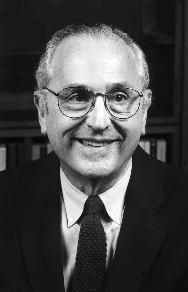
The groundbreaking work of John Bahcall, Raymond Davis, and Masatoshi Koshiba led to the discovery of solar neutrinos, furthering our understanding of the internal processes of the Sun and stars in general. Their research demonstrated that the nuclear reactions that produce neutrinos also cause the Sun to shine. Specifically, nuclear fusion among light elements is responsible for energy generation in the Sun.
Bahcall conducted some of the earliest research in this area. In 1961, he began collaborating with Davis and running calculations that later culminated in Davis's experiment in the Homestake Gold Mine in South Dakota. Bahcall provided the theoretical basis for the experimental work of first Davis, and then Koshiba.
A member of the National Academy of Sciences, the American Academy of Arts and Sciences, and the American Philosophical Society, Bahcall was a member of the Hubble Telescope Working Group for more than 20 years. He has received countless honors and awards including the NASA Distinguished Public Service Medal and the National Medal of Science.
Bahcall earned his A.B. in physics from the University of California, Berkeley, in 1956, an M.S. in physics from the University of Chicago in 1957, and a Ph.D. in physics from Harvard University in 1961.
Nuclear reactions at the cores of stars (including the sun, shown here) emit neutrinos.
Information as of April 2003

